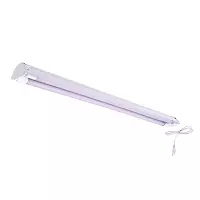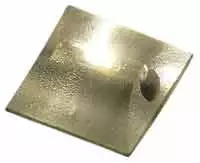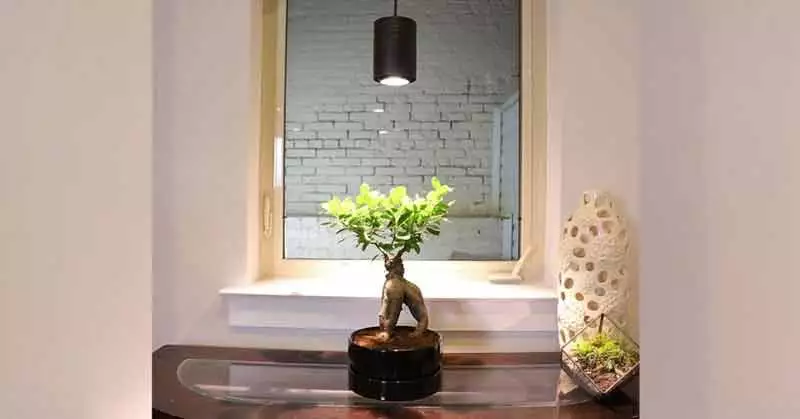While I am sitting at my home wondering which system of hydroponics I should get, there is a much more daunting question to be answered and that is which grow light to use? I am sure most of you are also stuck on which hydroponic grow light systems fits your style. Now, I have done some research and got some really handy info on grow lights. So, let’s begin!
What is a hydroponic grow light system or more often called the grow lights? It is a setup of an individual or multiple lighting equipment such as LED lights, Metal Halide bulbs, or fluorescent tubes, etc, that provides light energy to the plants as and when required. It is essential because hydroponics are mostly grown indoors in closed spaces where natural sunlight is not readily available.
How to Choose a Grow Light?
So now you know what a hydroponic grow lights system is. Now the main concern for most of us is that how do you choose a grow light for hydroponics? What should we look at to know if this grow light will be perfect for the plants that I want to grow?
This can be a little technical because there is something that you must understand about how light is being absorbed by your plants. There is a fundamental difference in the way humans and plants perceive light.
So the most common metric used to measure light for humans is Lumens which indirectly measures the brightness of the light. In the case of hydroponic plants, we cannot pick the brightest light because it may not provide the necessary input.
For plants, we need to keep in mind these three metrics that basically measure the effectiveness of the grow light system with respect to the plant and not the human eye.
Photosynthetic Active Radiation – PAR defines the type of light needed for photosynthesis by the plants.
Photosynthetic Photon Flux – PPF is the most important metrics to choose your grow light. PPF tells you the amount of PAR produced per second. It is being expressed in micromoles per second (μmol/s).
Secret: LEDs have low PPF and PPFD and are not suitable for flowering plants. A PAR of 2 micromoles per watt is a must when buying grow LEDs.
Photosynthetic Photon Flux Density – PPFD measures the amount of active radiation (PAR) that falls on the surface of the plants in reality. Lighting manufacturers tend to overestimate the PPFD as they only measure it on the centre part of a plant and not on the sides. It is measure in micromoles per meter square per second. For reference, lettuce seed germination requires PPFD of 50 µmol/s.m2.
You can read more about this here in the original research article titles “horticulture lighting metrics” .
Other factors such as the spectrum range should be in the range of (400-750nm) and the colour of the light will also affect the growth of your hydroponics. Grow lights come in different colours but the most widely used is the white light as it has the property to mimic the natural rays of the sun.
Also Read “Best 5 EC Meters for Hydroponics“
Does hydroponics need grow lights?
So now when we have discussed all the technical details of what should be kept in mind before buying or choosing your grow lights the question arises, do we really need to grow lights? Does hydroponics need grow lights?
Before answering this question, I would like to quote research done by Fluence Research that says “Broad-spectrum LEDs have yielded up to 35 per cent greater biomass in some cultivars, both in indoor and outdoor facilities. It has also improved the plant quality”. So, going by this research using grow light actually boosts the growth.
Other reasons why your hydroponics systems need artificial grow lights can be because your room doesn’t get enough sunlight or maybe the region where you live does not receive sunlight throughout the year. With the help of grow lights, you can grow plants 24×7. So if you are someone who wants veggies all around the year, make sure you have the perfect grow light systems. These lights also help to accelerate the growth of plants and give better yield for the same amount of area.
How many hours of light do hydroponics need?
Now when we know that, Yes, hydroponics needs grow lights and it is beneficial for the plants as well as the producer to have grow lights. The other major concern that I have as a hydroponics enthusiast is how many hours of light do the hydroponics need? Or do I leave the light open for 24 hours a day? What is the standard operating procedure when it comes to the operation of grow light systems?
As hydroponics are not affected by the natural weather and time of the day, we have to create day and night for the plants with our artificial lighting. This is done by taking care of the fact whether the plant is a long day plant or a short day plant i.e. plant growing in spring, summers or winters require a different kind of lighting.
Spring or Winter Hydroponics – As the days start to get shorter the direct sunlight exposure is also less for these varieties. For such plants, it is advised to keep light exposure below 12 hours per day and the rest period of the day for darkness as these types of plants prioritize darkness for photosynthesis. For example, strawberries, cucumber, tomatoes, peppers, beans, etc.
Summer Hydroponics – Summers have long days and so do these summer sprouting hydroponics require longer light hours to sustain their growth. Up to 18 hours of light can be adequate for such plants. Some examples are lettuce, spinach, potatoes, etc.
Neutral Hydroponics – Some varieties are indifferent towards the long or short days. It doesn’t mean that you will not at all light them up. These plants can take anywhere between 10-14 hours of light per day and still grow to give fruit. For example roses, corn, etc.
Grow light system comes with both manual and automated light adjustment and dimming options to exactly mimic the natural environment. A very important step is to repeat the light cycle every day at the same time to keep the natural flow of a day.
Also Read “5 Methods to fix Root Rot in Hydroponics “
Types of Grow Lights
Now that we know what and how to grow lights are, let’s look at some of the commonly available types of grow lights so that you are not confused again. There are mainly four types of ambience a grow light can create, warm white, cool white, daylight, and colour. To produce such a natural ambience different types of lighting technologies are used. The top three grow lights systems consist of either or all of the following types of lighting solutions.
LEDs
LEDs have been dominating in the industrial and residential sectors but when it comes to hydroponics or horticulture lighting LEDs are still new to many. Although LEDs are energy efficient, the results that they give are not so satisfactory mainly due to their high brightness and low intensity cool white light.

As we discussed earlier in this blog, PAR value and PPF should be high enough to get good growth out of our hydroponics. LEDs tend to be a little low in that criteria and hence lag behind.
Benefits of LED grow light
- Power saver – energy efficiency saves a lot of cash
- Durability – LEDs are built for long term use and hence survive for a year or two without any major wear and tear
- Cool White Light – It prevents the plant leaves to burn in case the light is very close to the plant
- Customizable – LEDs are highly customizable. Both colour and intensity could be controlled. They cover a temperature range of 2500K to 6000K
Disadvantage
LEDs are a good source of grow lights but many manufacturers do not build LED light systems that can support the flowering stages of plant growth. Also, the LED equipment is relatively costlier and you need to complement it with other accessories such as reflectors and timers etc.
Fluorescent
This one is a vintage solution to the age-old hydroponics lighting problem. Proving cool white light to the plants it sometimes falls short of doing its job properly. The plants are not able to photosynthesize due to the power of an individual fluorescent bulb. To overcome this problem manufacturers have come up with a T5 Fluorescent grow light systems.

T5 system of lighting contains fluorescent bulbs in a 2ft or 4ft long fixture. 1 tube of 2ft or 4ft can contain up to 2 to 4 bulbs proving an adequate amount of light energy to the plants. Large fixtures can hold up to 12 lighting tubes. They cover a huge area and provide a strong intensity of light beneficial for seed germination and vegetative plants.
Benefits of Fluroscent grow light
- Cheapest and effective grow light
- Durable and can be spread to a vast area
Disadvantage
- Can burn the leaves if put too close and destroy the yield
- Not suitable for Vegetative plants
High Intensity Discharge Lights (HID)
HIDs are large bulbs filled with inert gas and two electrodes that produces light when electricity is run through them. There are two types of HIDs
Metal Halides – These are effective for vegetative plants as they generate a bluer light spectrum

High-Pressure Sodium Bulbs – These are effective for plants who are at their flowering stage as the sodium burn to give a red/orange light spectrum.
The main components of an HID bulbs are as follows
Reflector Hood – A reflecting material is required to focus the light on the plants instead of dispersing off in the surroundings. This reflector provides light to the plants through various angles creating a good lighting environment.
Remote Ballast – As there is an inert gas and metal parts inside the glass chamber of the bulb, it requires a power box that slowly heats up the gas and produces light. It is bulky and often becomes too hot after prolonged use of the HID light.
Timer – A timer is used to switch on and off the HID light according to the schedule of the plant.
Benefits of HID grow light
- High-quality light for plant breeding
- Dimmed light can be delivered
Disadvantages
- The bulbs become too hot after some time and can burn the leaves easily
- Logistics of using HIDs are not cost-effective
- Lasts only 15-24 months maximum

